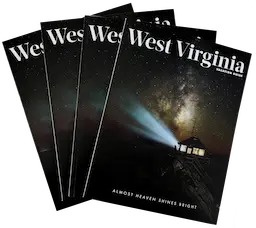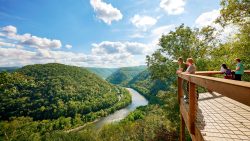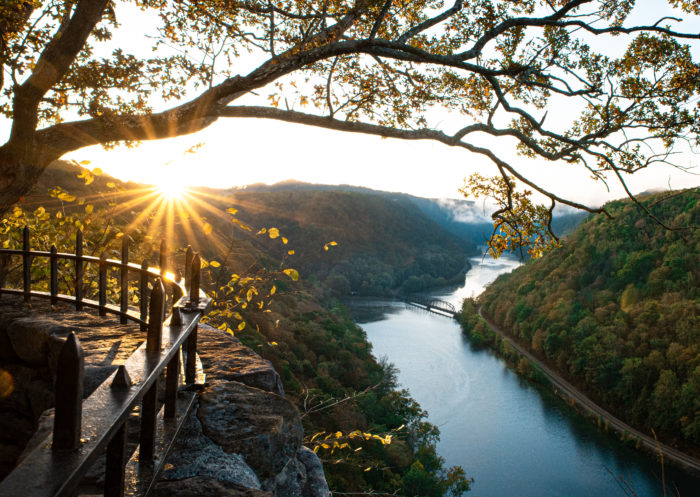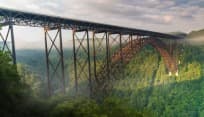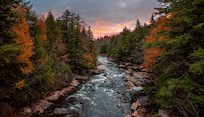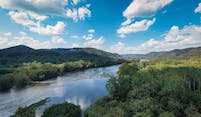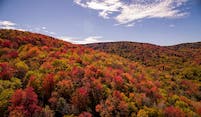These special West Virginia buildings feature unique architecture and history
While West Virginia is known for its rolling hills, gorgeous mountains and abundance of wildlife, it is also home to some of the most unique and historic architecture on the East Coast. Many of the buildings across the state have international influences that span across centuries. Next time you’re traveling around the Mountain State, stop and get a closer look at some of these locations.
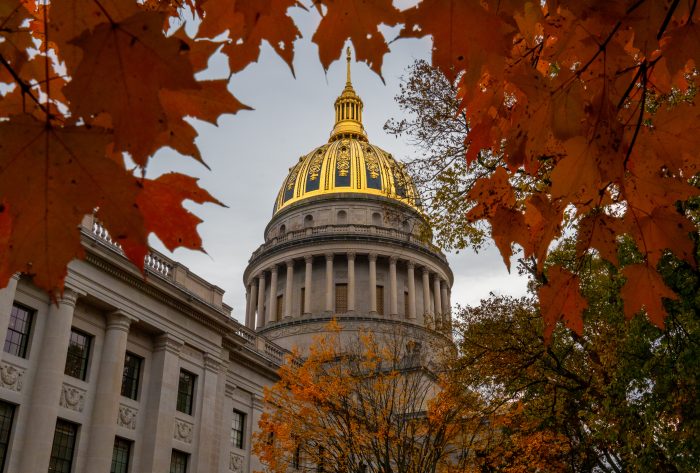
The West Virginia State Capitol
The State Capitol building is one of the most recognizable buildings in West Virginia. For many, it is the first thing they see when arriving in Charleston, a bright and shining welcome to the state’s capital city. The Capitol was designed by Architect Cass Gilbert who also designed the world’s first sky scraper in New York City. The building was dedicated by Governor William G. Conley on June 20, 1932 – West Virginia’s 69th birthday. The exterior of the building is buff Indiana limestone and the 293-foot gold dome is actually five feet higher than the dome of the United States Capitol. The dome is gilded in 23 1/2 karat golf leaf applied to the copper and lead roof in tiny 3 3/8 squares. If you’re in or around Charleston, stop in to the capitol for a tour and history lesson.
Trans-Allegheny Lunatic Asylum
One of the spookier buildings in the state, the Trans-Allegheny Lunatic Asylum was constructed between 1858 and 1881. It is the largest hand-cut stone masonry building in North America, and is the second largest in the world behind the Moscow Kremlin. The building was designed by architect Richard Andrews and was designed in a way that called for long rambling wings arranged in a staggered formation. This was so that the connecting structures would receive an abundance of sunlight and fresh air. The building played a role during the civil war, and was over-populated for much of its operation, even throughout much of the 1900s. The asylum was closed in 1994, but was reopened as a tourist attraction, offering tours of the historic building. Paranormal investigators still continue to flock to the asylum each year.
Bramwell’s “Millionaire Row”
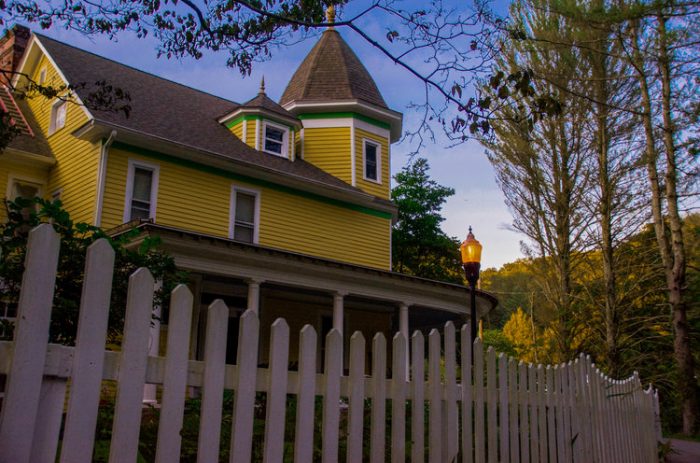 In the early 1900s, the town of Bramwell became home to more millionaires per capita than anywhere else in America. Mansions popped up one by one along the banks of the Bluestone River, and they’re still there today. The town has a much smaller population now, but a walk down the brick streets and “Millionaire Row” can take visitors on a trip through history. Many of the homes were built in the late 1800s and early 1900s and still feature the original ornate woodwork, leaded and stained-glass windows, slate, copper and tile roofs, indoor swimming pools, ballrooms, parlors, and porches. Many of the houses are named after the original owners, and you can tour some of them during the Bramwell Ghost Tours in October or the Christmas Tour of Homes in December.
In the early 1900s, the town of Bramwell became home to more millionaires per capita than anywhere else in America. Mansions popped up one by one along the banks of the Bluestone River, and they’re still there today. The town has a much smaller population now, but a walk down the brick streets and “Millionaire Row” can take visitors on a trip through history. Many of the homes were built in the late 1800s and early 1900s and still feature the original ornate woodwork, leaded and stained-glass windows, slate, copper and tile roofs, indoor swimming pools, ballrooms, parlors, and porches. Many of the houses are named after the original owners, and you can tour some of them during the Bramwell Ghost Tours in October or the Christmas Tour of Homes in December.
Each of these West Virginian structures are special in their own way and each tell their own story. All of these locations will make for the perfect stop on your next road trip through Almost Heaven.
What is your favorite piece of West Virginian architecture?
More history and heritageThis post was last updated on March 17, 2022
